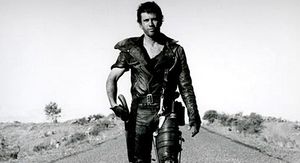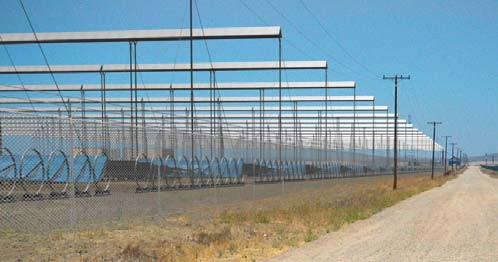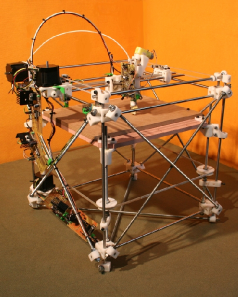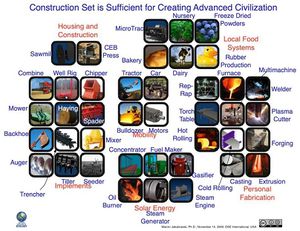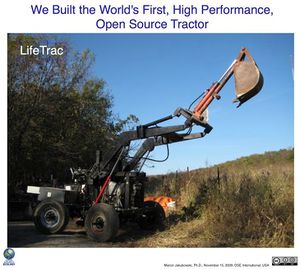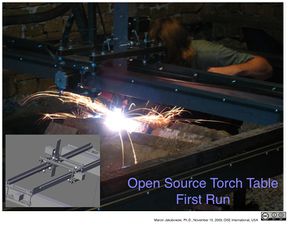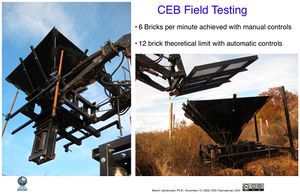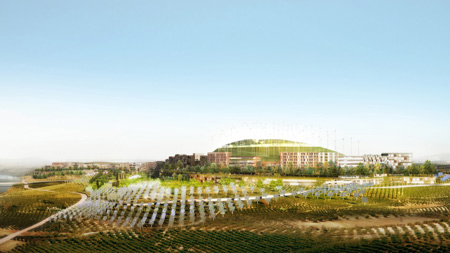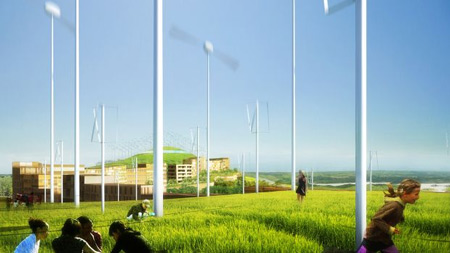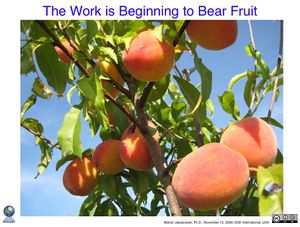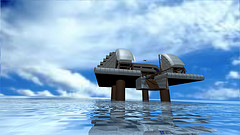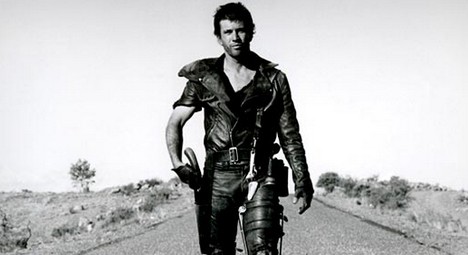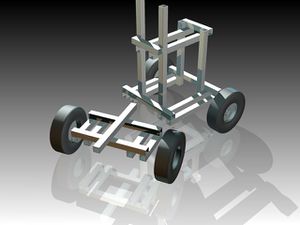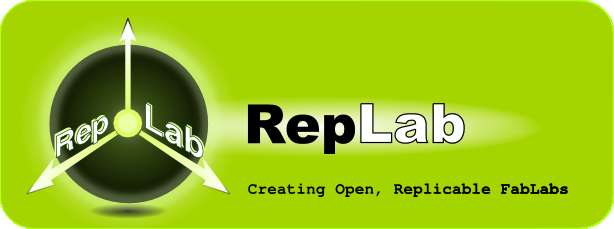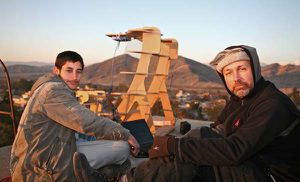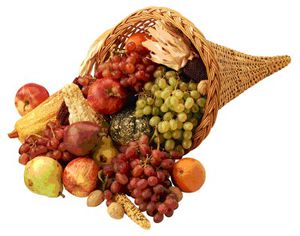H Plus Summit Slides
Marcin will be presenting this 5 minute presentation at the Humanity Plus Summit.
The flavor is high-tech neosubsistence.
Slide 1- Cover
How to Build the World's First, Replicable, Post-Scarcity Resilient Community By Marcin Jakubowski, Ph.D. Presented at the H+ Summit, Irvine, Californa December 5-6
Slide 2
Imagine if you took all that society has learned to date, and apply it to a better world? How about a post-scarcity, resilient community? I mean a settlement, just like today, but based on open source knowledge. What would it look like?
The unique part is that we have a unique point in history of high tech and instant communication. Today, it's possible to create advanced civilization from dirt and sticks, anywhere. This has been proven historically - except on a the global scale. People continue to plunder and kill each other to get their piece across the globe, to the tune of 150M per century, and history indicates this number will increase this century. Let's cut that out, and get high-tech, advanced neosubsistence from any piece of land. This makes war obsolete, and population explosion is impossible if we're using primarily local resources to live.
Living 100% from any single land parcel is a trivial possibility using today's technology- and it's scalable to communities, towns, and cities.
So, let's build a post-scarcity town. No doomsday scenarios included.
From [1]
Slide 3 - Basic requirements: energy, materials, housing, food, technology. Or, 6 ways to die
We start with 6 ways to die, and how to avoid it: too cold, too hot, hunger, thirst, illness, injury. Basic requirements are food,energy, and housing.All energy comes from the sun, and nature provides all materials. To thrive, we convert these materials to useful form by using information and tools.
It boils down to energy - do we have it? Yes, the sun is the source of all sustainable power. The USA use is 500 GW (1.6kW/person according to WRI) these days. You don't have to be a NASA scientist to verigy thatthis power can be generated from a square area of 100 miles on the side. This is about .3% of the area of the USA. Next.
Slide 4
If we have energy, then we can have materials. Let's turn dirt into advanced civilization.
1. Take clay, and you can smelt aluminum. This is aka advanced civilization.
2. Take sand and you have silicon. This is aka digital age.
It's happening fast.
Slide 5
For technology - here's my favorite example. You can build RepRap - the OS 3d printer - for 300 in parts. It would cost you $10k for a commercial version.
.
Slide 6
The subset of tech that we promote is the GVCS - we're building the construction set for building civilization...
That's what we're doing. In particular, we claim that with these 40 technologies and external metal supply, we can create civilization from scratch. (40 pieces)
.
Slide 7
We have built some parts of the GVCS: OS tractor...
.
Slide 8
Open source torch table prototype:
.
Slide 9
...and CEB press. Open source, crowd supported, post-scarcity aimed.
.
Slide 10
You have seen notions of cost reduction. Yes. Factor of 30 for RepRap. We have shown similar for CEB press- $2500 in materials. The next competitor is $45000 for a 10 bpm machine, we think we can do 12 bricks per minute with ours. So we're talking 10-20 cost reduction.
Slide 11
So maybe this is a great example of post-scarcity economics for real needs? How about CEB housing:
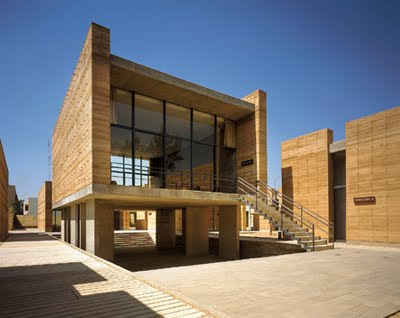
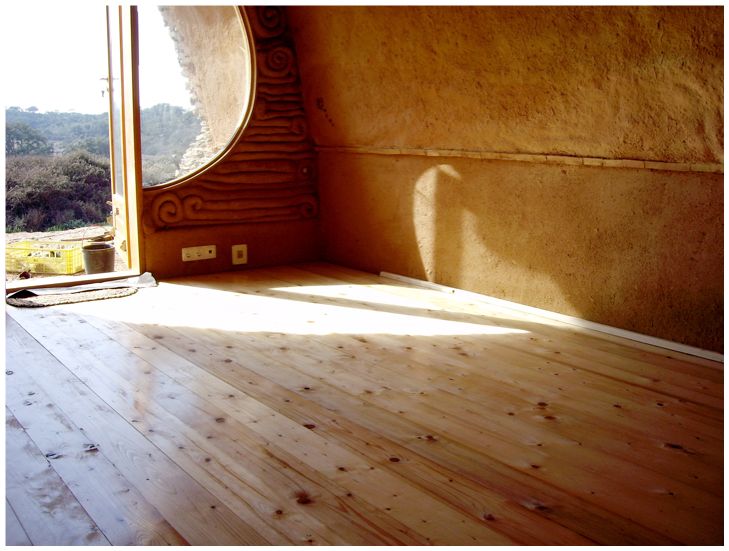
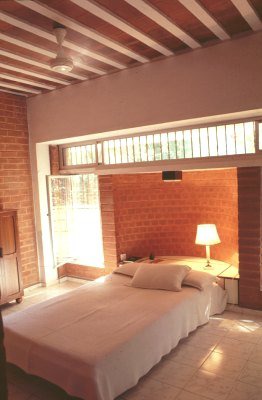
Slide 12
But we're really interested in resilient communities.
We prefer this:
and this:
Slide 13
The work is beginning to bear fruit.
Slide 14
One of our competitors is Seasteading - and i mention this because the founder is at this conference as well. Patri claims awesome experimentation in novel social and political forms. We think it's much easier on land, if you have a resource based economy, becuase you don't have a $10/sq foot tax on your platform (in the form of depreciation).
Our competition is the mainstream economy. So our main competitor is people enjoying their 9 to 5s. We gather a few friends, live happily ever after. Is it possible?
Slide 15
A resource-based economy means that you are processing natural resources using advanced, open source technology. You create an economy of products, not federal reserve notes that are backed by some form of human belief, because that belief can vaporize at any time. Can we compete with mainstream production. Food: we need to do 25 hours or under per person per year - that's how much time a person spends shopping. We have a plan for 12 hours per person per year - permacultural garden, edible landscape, animals, and field crop with automated tractor.
So we can prosper. The only thing we need to watch out is keeping up with knowledge, which makes our lives explode with confusion. Human wisdom needs to increase. I don't recommend that we remove ourselves as far as possible from natural life support systems, or go to space.
For example: permaculture could provide now. Add remote control tractors, and your food is obtained at under 50 hours per person per year.
This is the average amount a person spends grocery shopping per year. This is about 25 hours per person per year. So we must be competitive with this amount of time to replace Shopping with growing. Easy to do with permaculture and automated tractors. You don't need to GE everything and grow things in test tubes.
If we live from local resources, population explosion is impossible.
Slide 16
Lifestyle? The critical gap of post-carbon, doomsday, and other fatalists are that we need to restrict ourselves in our prosperity. I don't think so. We propose neosubsistence - high-tech, automated survival where you don't need to work much, so you start to pursue your dreams more. Materials are not an issue. Energy isn't. Peoples' imaginition is the limit on this one.
But, lifetime design equipment is key - or you can't keep up with your tools. 10% depreciation on tractors and things kills you if they are not lifetime design.
So we're coming up with Tractor Construction Set. And Steam Engine Construction Set for solar and mobile power.
Slide 17
This brings me to fabrication aspects. Move on to RepLab - the open source fab lab. You may have heard of the fab lab - the lab scale microfactory where they claim you can make just about anything. RepLab Construction Set is what we're interested in general - plug-in modules for all types of fabrications. Like antennas made from chicken wire in FabFi. The RepLab is a universal constructor.
Slide 18
As technology drops in size, and information flows increase - the inevitable is technological recursion where anyone can make anything anywhere. You can create a locus of advanced civilization - on a 30 acre farm. That's our experiment.
The last frontier in decent materials - or decentralization materials. Take Open Source Fab Lab, and reproduce technological process down to all industry, and smelt aluminum from clay and silicon from sand. Locally, so you don't have to go to war to get the same, especially if solar energy is available.
As technology drops in size, and information flows increase - the inevitable is technological recursion where anyone can make anything anywhere. You can create a locus of advanced civilization - on a 30 acre parcel. That's our experiment.
Slide 19: Economy
What's the economy? Digital fabrication and permaculture for food, energy, and technology base like cars and fuels. neosubsistence. Produce if you like. Let an automated tractor do your agriculture, or a robot milk your goats. Time requirement - we're doing an experiment that shows 12 hours of time per person per year for all your food needs. That's less than the time you go shopping. 1/2 hour per week. This collects and grows your energy and fuels. You live a quality of life where you decide what to do with your time. The rest is harvest and enjoying local food. You can go to the restaurant, too. We do trade, but we also know how to produce everything.
Slide 20
What's unique?
- This is not talk only.
- It's an integrated program.
- Become a lifetime developer/investor with a R&D lifestyle where you're the guinea pig
What are the challenges?
This is not easy. Most people don't believe this is possible. MOst don't believe they could be makers. Most don't understand that all wealth comes from the ground. Most people don't understand that technology exists to turn dirt and twigs into anything. And in particular, they don't understand that just about all of this can be done in their backyard.
Slide 20
In conclusion - we're showing certain unique concepts being implemented:
- The infrastructure for a real, post scarcity community with complete economy, off grid, high-tech neosubsistence.
- Open source production and free biz models for post-scarcity creation
- New social organization - autonomy on land if this is adopted.
Subscribe to be a True Fan - $10/month. Or, become a lifetime investor and developer if you want to go into the deep end.
The real deal: autonomy, no sacrifice in comfort, full freedom to pursue what you need. This is unbelievable for most, but real if you choose it - as you can't depend on the next guy to do this. Start a new system, this one is broken - and evolve to freedom.
